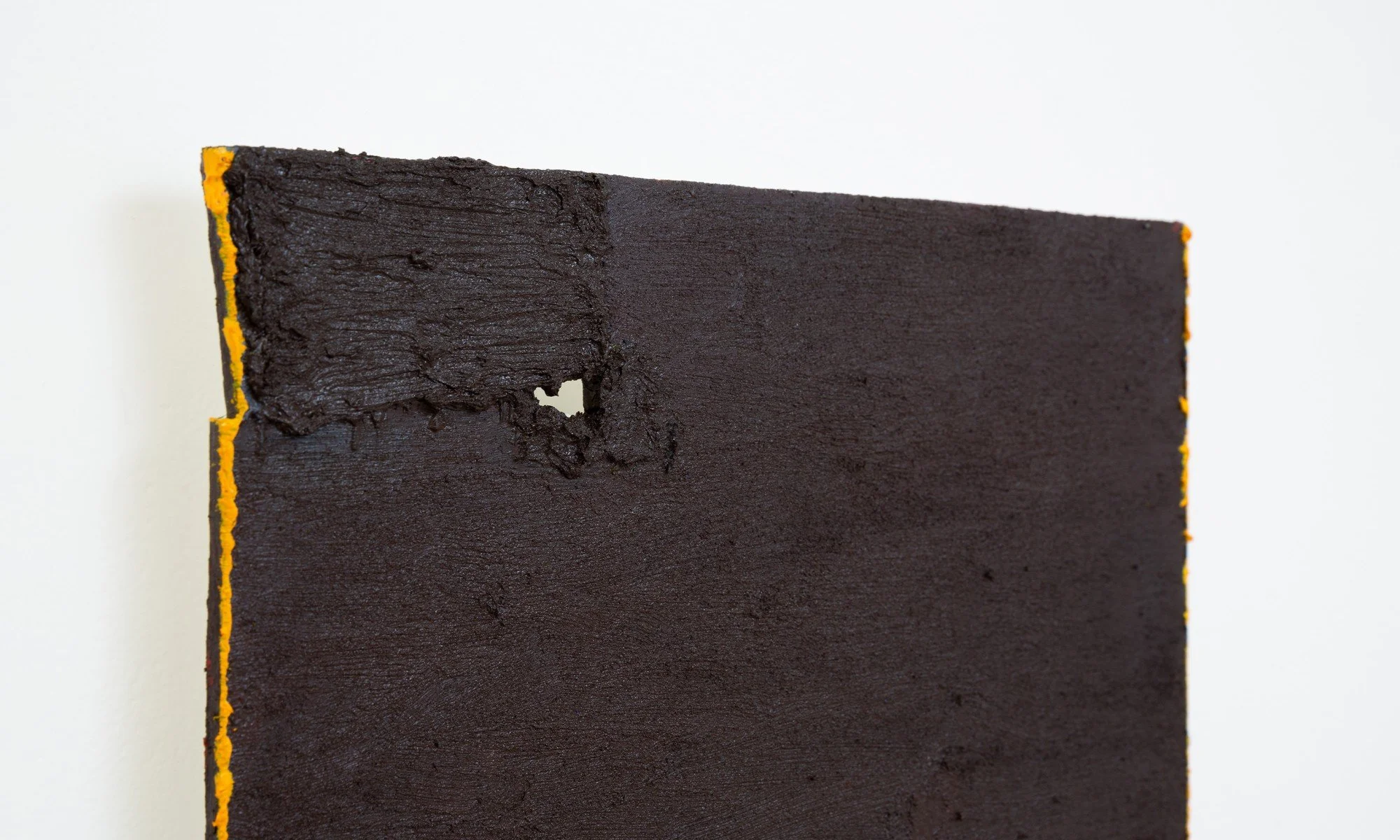Louise Gresswell
Re-Form
ESSAY | GALLERY 9 | June 2020
Louise Gresswell’s paintings perform a tussle between texture and tone; tactility and visuality. Yet, it’s a harmonic tussle – a resolved tension embodying the undulations of intuition. Inspired by the conceptual and formal singularities of Louise Bourgeois, Gresswell hems her work with ‘personal history, internal conflicts and past traumas’, stories that remain untold as the artist silences autobiographical narrative to carve open cognitive and sensory space for the viewer.
Just as Bourgeois spoke of how ‘the physical acting out’ of cutting and repairing enabled her to feel a sense of control and reconcile psychological needs, Gresswell allows simple gestures to lay bare that which is felt. Forging each painting without preconception, the physicality of her process hatches a dance of dichotomies, swaying between revelation and concealment, control and surrender, vulnerability and protection. Early in her practice, the artist would write on boards and cut out words with a jigsaw. Altering the structure of the board was a cathartic and curative act, and this soon became a fundamental part of her process. The boards are ruptured and paint is scraped, gouged and pared back as Gresswell excavates deeply personal histories. At the same time, thick, gritty layers of oil are gradually built up, holes are patched and cracks filled with studio debris – string, canvas, hessian, cardboard – an act of suturing that signals the ways in which we bind and bandage the past. She incorporates offcuts from old works and sometimes, even, paint is scraped from a painting and wiped onto the edges of another, forming a painterly cross-pollination that breeds symbolic tethers between materiality and memory.
In this series, the saliently handmade hums with a celebration of imperfection. Textures collide, rawness marries refinement and paintings grow into their own haptic eccentricities as Gresswell hooks our gaze to the profound subtleties of surface. The works sing sweetly of another time and place; before the sleek surfaces and screens of our digital age wrought upon us a plague of perfection. By breaking the formal regularity of the conventional canvas and subverting the traditions of painting, they are an ode to defiance. Yet it is a gentle defiance; a soft rebellion. There is a surgical quality to Gresswell’s paintings, with their fine incisions, skin-like seams and tender repairs, as if the artist has operated on her subjects in search of something elusive; the stuff of self that we can never truly grasp. Surfaces resemble scar tissue, bringing to mind processes of pain – and, more importantly, of healing. The small format of the paintings enables Gresswell to tend to them flat, often in her lap, a nurturing moment where artist becomes carer; mother. Sometimes she leaves a hole, sometimes she fills it; sometimes we heal or forget; sometimes we don’t.
Though these paintings are entirely non-representational, we cannot help but project onto them affiliative imagery. Surfaces found in nature – earth, soil and mud; a downy blanket of freshly-fallen snow; a lush lawn of grass – morph into familiar fabricated materials like cement render and raw linen. In many of the works, tacit vertical lines become tightropes onto which our eyes tread as we softly, slowly, move through the composition in rectilinear ripples. It is tempting to form horizons here, divisions between earth and sky, and yet these associations dissolve the moment they appear. Colour is applied instinctually, affectively: ‘colour carries emotion and makes me feel something’, says the artist. Titular references to colour and nuance – ‘black and pink edge’, ‘green tab’, ‘red frame’ – distil Gresswell’s paintings down to their very essence, shedding any pretence and presenting, proudly, the rawness of their raison d'être. They are what they are, and in their process of ‘re-form’ the scratches, seams and scars become a thing of beauty.
